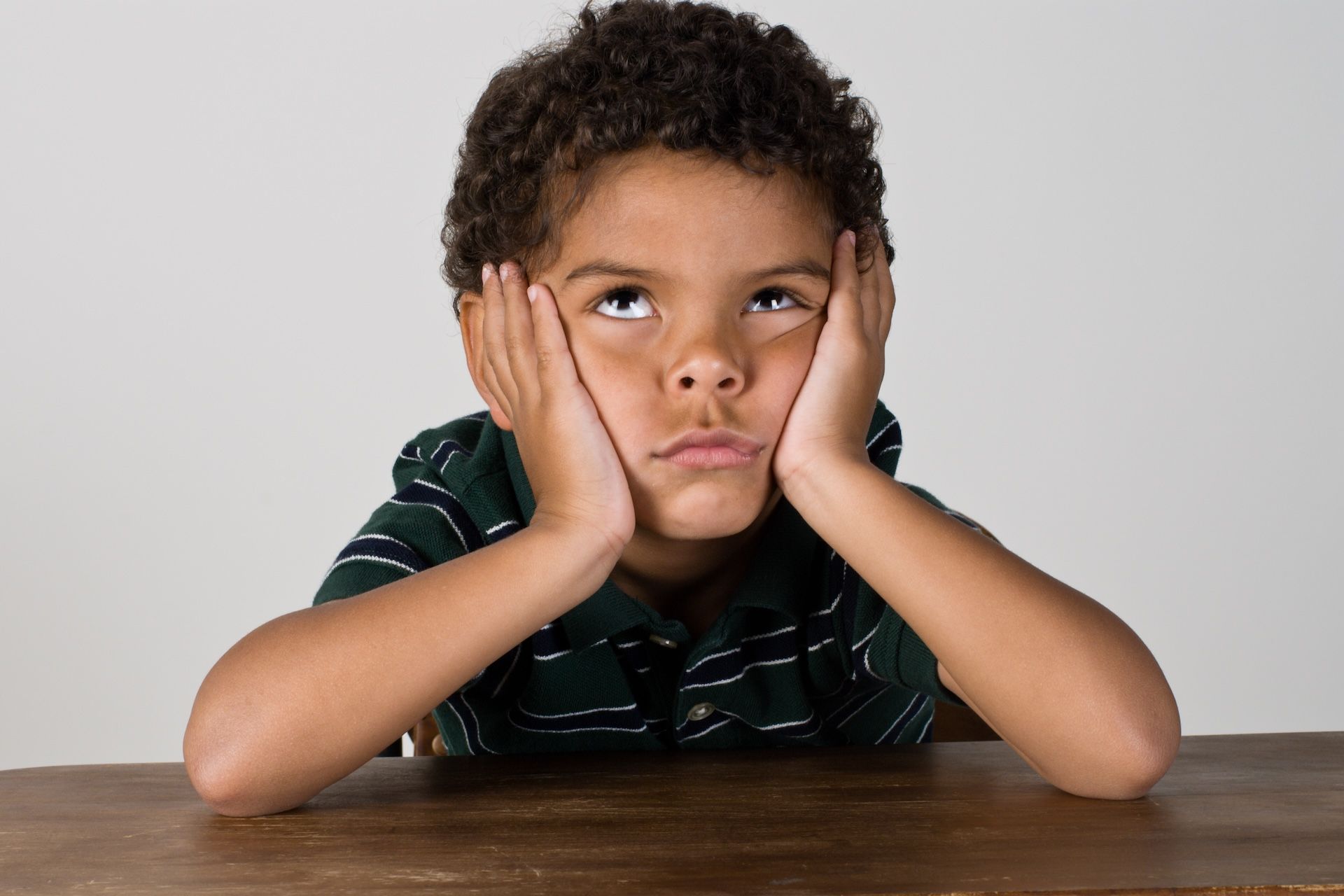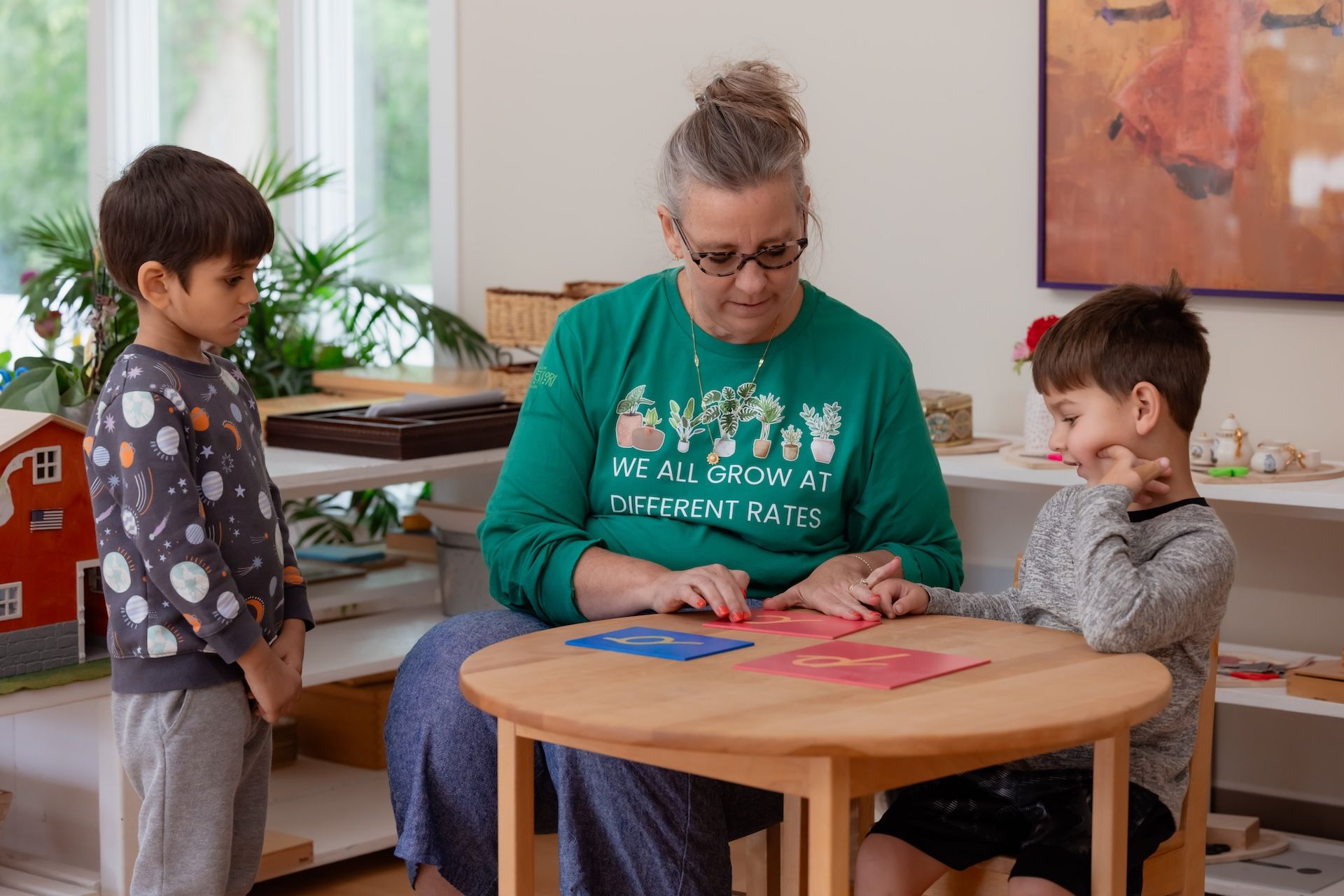Throughout history, all cultures around the world have expressed themselves through art. Humans have always had the need to express themselves creatively. Many times a day, we express ourselves without using any oral language, from our selection of fabrics and colors of the clothes we wear to the food we eat. Children express themselves too, in very creative ways if we allow them. In this month’s article, we will look into art. What does it mean and how does it look for our children? How can we ensure there is freedom of expression and different ideas to prepare your environment for this creative way of communication?
Dr. Maria Montessori talked about the importance of offering the child many opportunities to develop his senses, such as controlling his hands and always allowing freedom for self-expression. From a very young age, the child expresses himself through the foods he likes to eat, the clothes he prefers, and even the objects he wants to be surrounded by.
Art is one of the ways we can express ourselves, and we are all born with the ability to appreciate it and create it. As your child grows up, you will notice the artistic development of his scribblings. Rhonda Kellog researched this development and discovered that children progress from dots to lines, to squiggly lines, to making almost closed shapes, to an imperfect circle. This development is closely related to the development of the hand and the freedom of repetition.
How do you teach your child to scribble?
You don’t. Children naturally explore what their hands can do with certain writing instruments. There is no need to help him step by step to draw lines. Your most significant input is giving him the freedom and preparing the environment.
What does freedom mean?
- Allowing your child to draw as much as he wants.
- Avoiding telling him what to draw. For instance: “Draw a circle.”
- Avoiding asking him to draw something if he does not want to do it. For instance: “Make a beautiful drawing for me.”
- Avoid telling him how to grab the writing tool. For instance, manipulating his hands, grabbing the chalk or crayon, correcting any position of the fingers, or discouraging him telling him he is not doing it correctly. Your child’s hand is still very young, and he is working toward controlling all of his muscles. With practice and freedom, he will master how to grab writing tools. Plus, we do not want to give negative feedback about drawing. We want him to enjoy this method of communication.
- Have no expectations and avoid expressions like “You left this part of the paper without color,” or “Is that it?” Remember, it is his art, not yours. He knows what he wants to express and how he will do it on paper.
When we talk about art, it is essential to highlight that it is about the process, not the product. It is about the internal activity the child is having when he is making art, not about labeling any products. Avoid expressions like “This is beautiful,” or “This is incomplete, draw something else,” or “I am very proud of this.” Remember that we want the child to stay motivated from the inside about the process, not by extrinsic factors based on the product. Describe what you see. “I see you used green for this painting,” or “I see you made many marks on the paper with the blue crayon”; acknowledge what you see, and be real and objective with your input (you can talk about color, size, or shape). Your child trusts you; you don't want to lose your credibility with him.
Preparing the environment
- Depending on the age of your child, you can offer different tools for him to use. Remember, art can be messy, and that is okay. What might look messy to us looks like hard work for them. So, keep that in mind and prepare the environment. These are some suggestions to have at home:
- Finger paint: Make sure it is washable and non-toxic. Give your child the freedom to grab small amounts of paint. Avoid giving him the entire container because the odds are that he will have fun taking all the paint out. You can use it on paper, a plastic placemat, or any surface the child can manipulate and you are comfortable with.
- Crayons and Chalks: From now until your child is around three years old, make sure to offer the ones that are egg-shaped or chunky rock shape. This is to avoid the wrong position of fingers on regular crayons or chalks. Your child is still working on dissociating the movements of the wrist and fingers. He is not ready to manipulate regular crayons properly. Also, he is learning to control his force when using regular crayons, and the odds are that he will break them in a matter of minutes.
- Large pieces of paper and chalkboards: Remember your little one is still developing his fine and gross motor skills, so if you give him a 3x3’’ paper to draw on, the odds are that he will draw/paint on the surface under the paper as well. Consider the movement of his shoulder and the need he has to make big movements. When using chalk, a great idea is the pavement at the park or a sidewalk where he will have a pretty big surface to express himself.
- Paint with a paintbrush: Make sure to provide a small, chunky paintbrush and do not focus on how he grabs it. You can have a floor easel so he can paint seated and gradually move on to a small easel when he can stand up and walk.
- Clay: This is a great way to work out all the muscles of the hand. If possible, avoid Play-Doh since it is very tempting to eat because of the smell. It also does not help strengthen the fingers. It is so soft that the child does not work his fingers as much as with natural clay. Avoid telling him what to create with the clay and show him how to manipulate it, then let him create his masterpieces.
- Musical Instruments: Provide isolated instruments so he can explore them and make his music with them. Provide plenty of music vocabulary and enjoy the melody.
Item of the Month
Egg Shaped Crayons
These crayons are an excellent addition to your child’s art materials. He will be able to manipulate them independently, work out his fingers and keep drawing without breaking them.
Link to buy them at Amazon.com
https://www.amazon.com/Toddlers-Washable-Stackable-Children-egg-shaped/dp/B07GPFCBHH/ref=sr_1_3?keywords=egg+shaped+crayons&qid=1582586358&sr=8-3
Quote of the Month
“It took me four years to paint like Raphael, but a lifetime to paint like a child” By Pablo Picasso
Have a little extra time?
Everyday Music
Watch this 10-minute video where children explore music in their Montessori school environment. They have the freedom to manipulate music material after having a formal presentation by the teacher and can create their own melodies, which is such a beautiful way to appreciate and create music at every age. Enjoy!
Link to Montessoriguide.org:
https://vimeo.com/78787065



